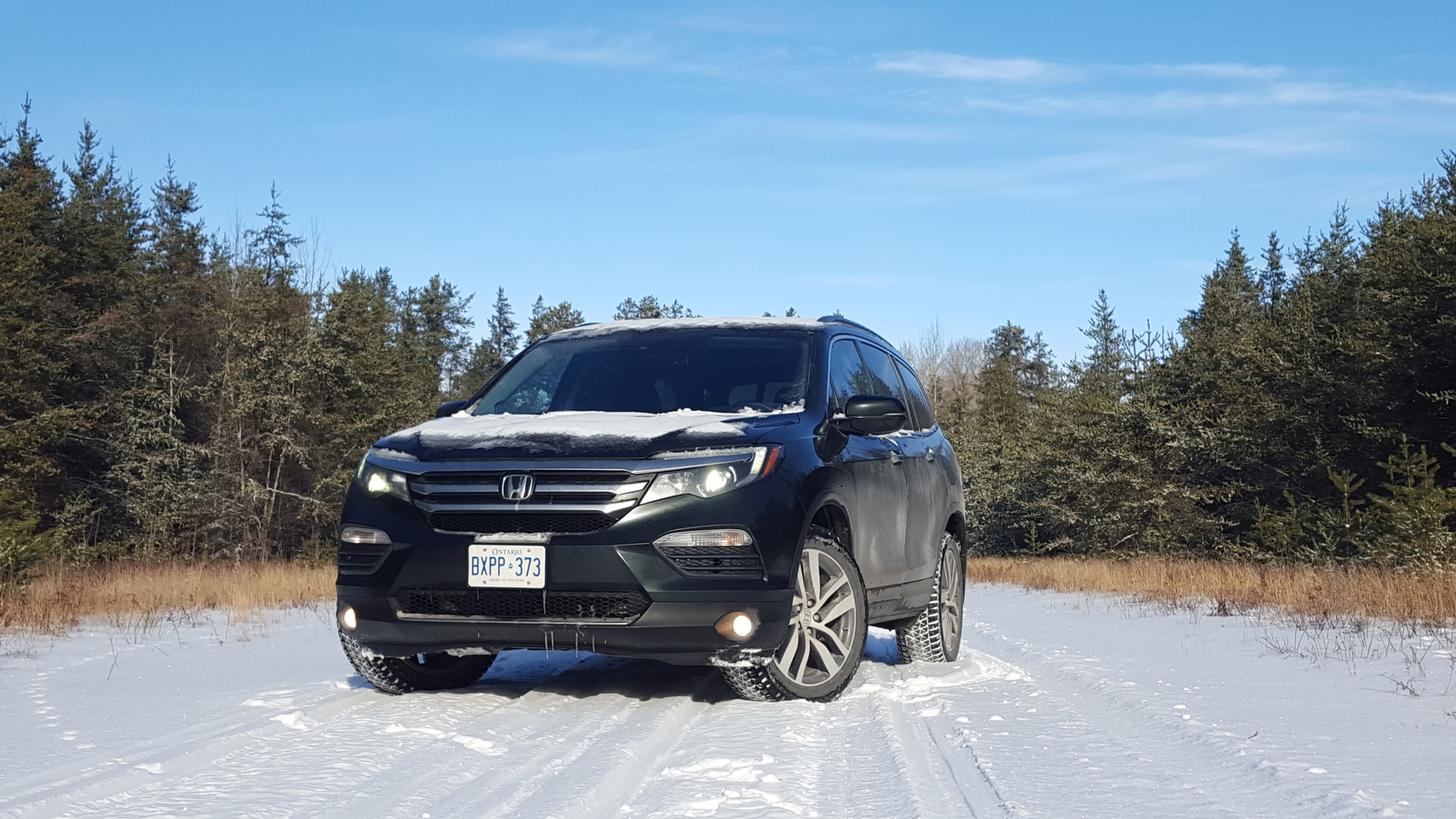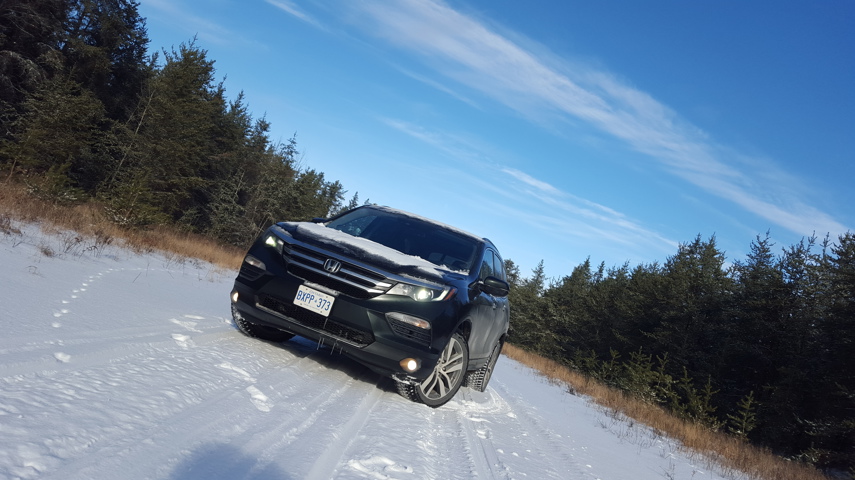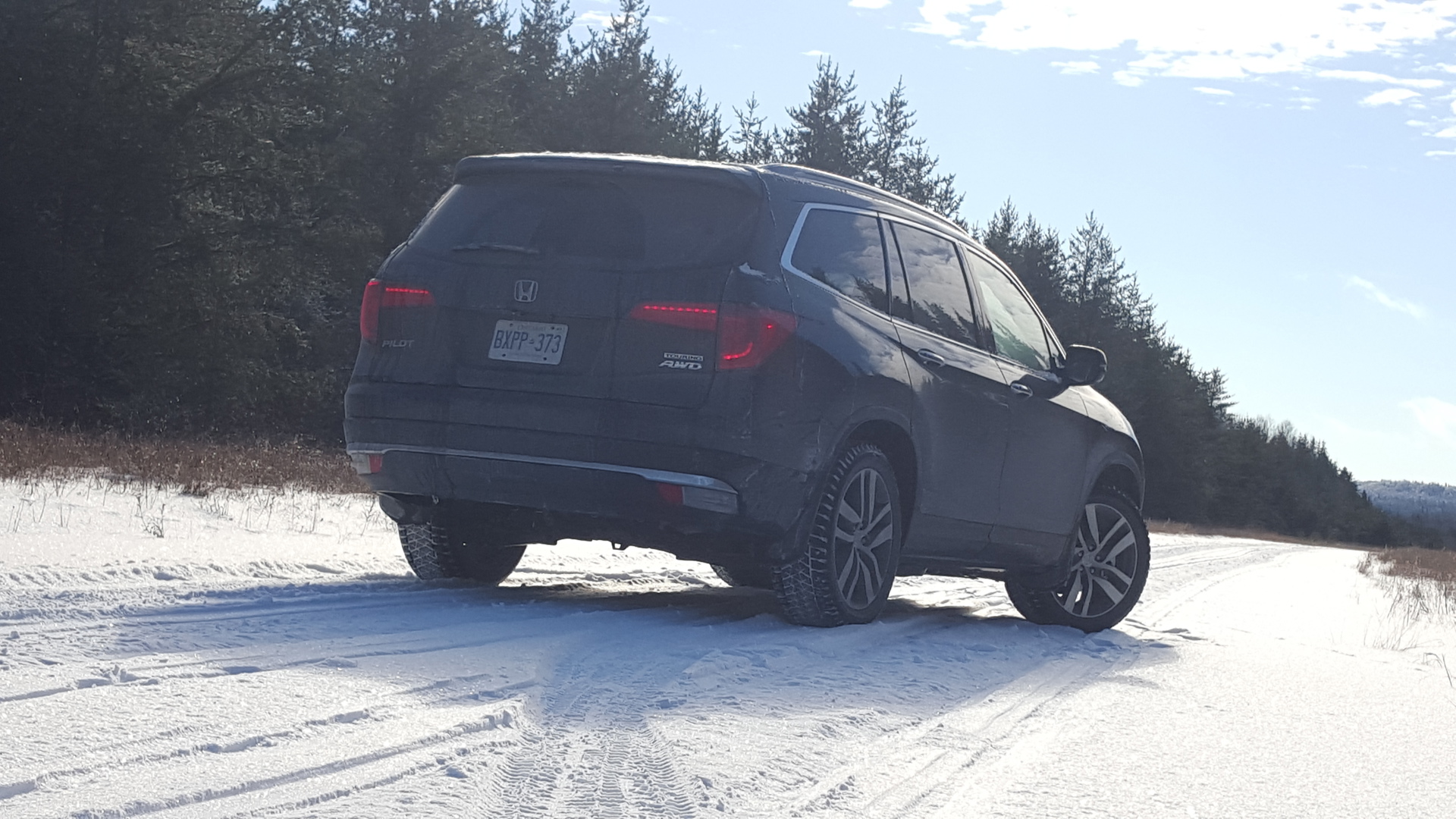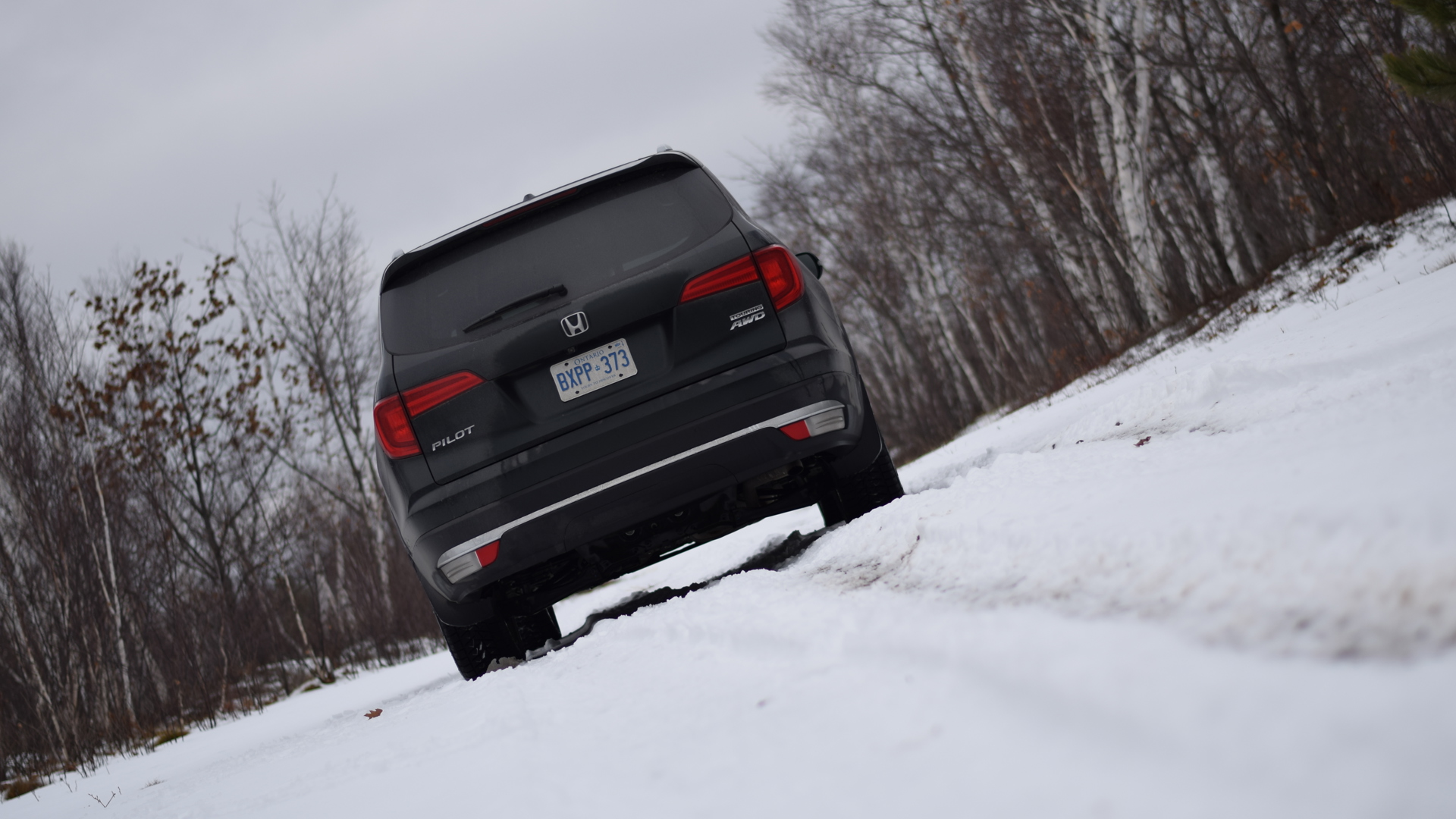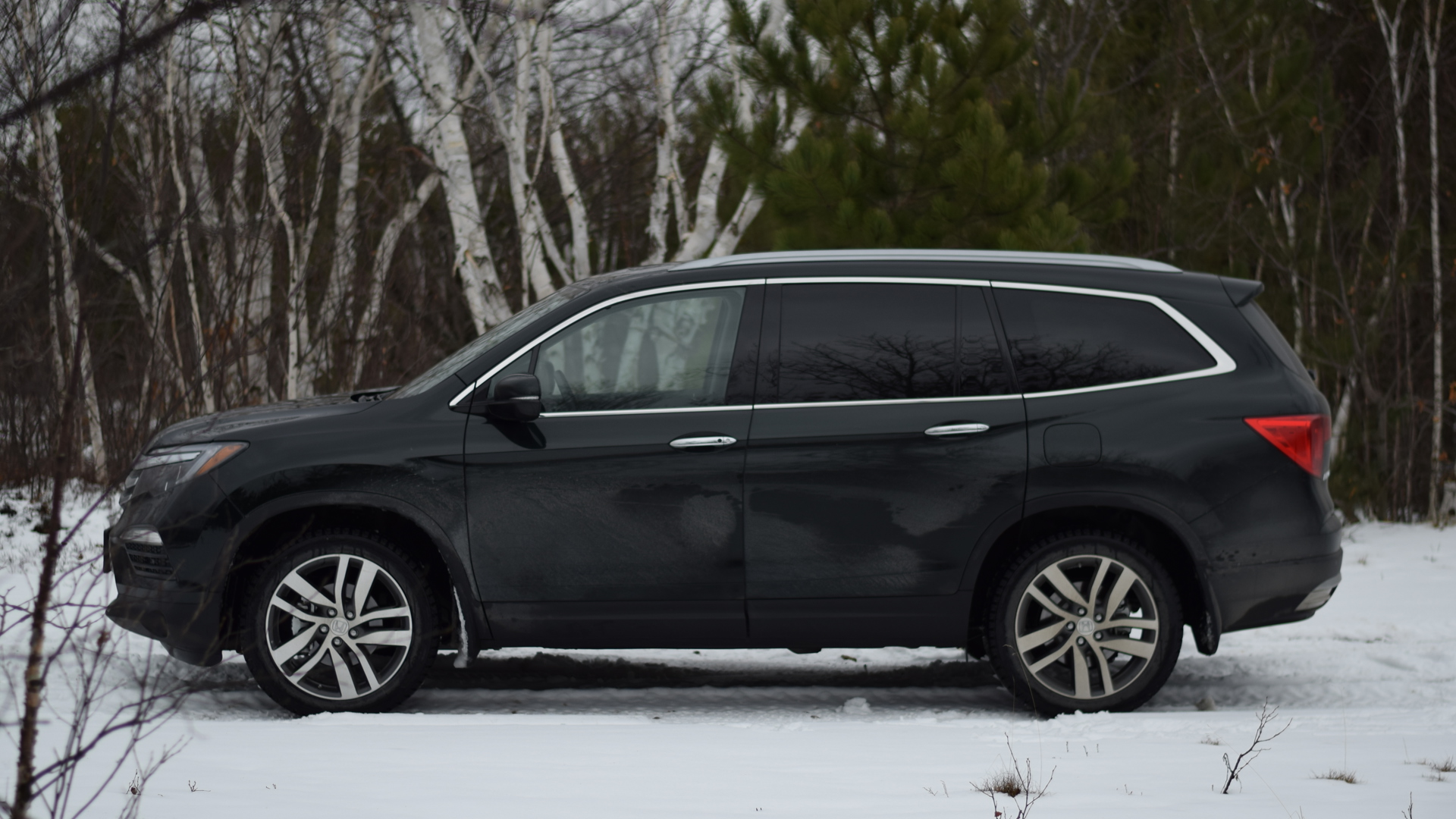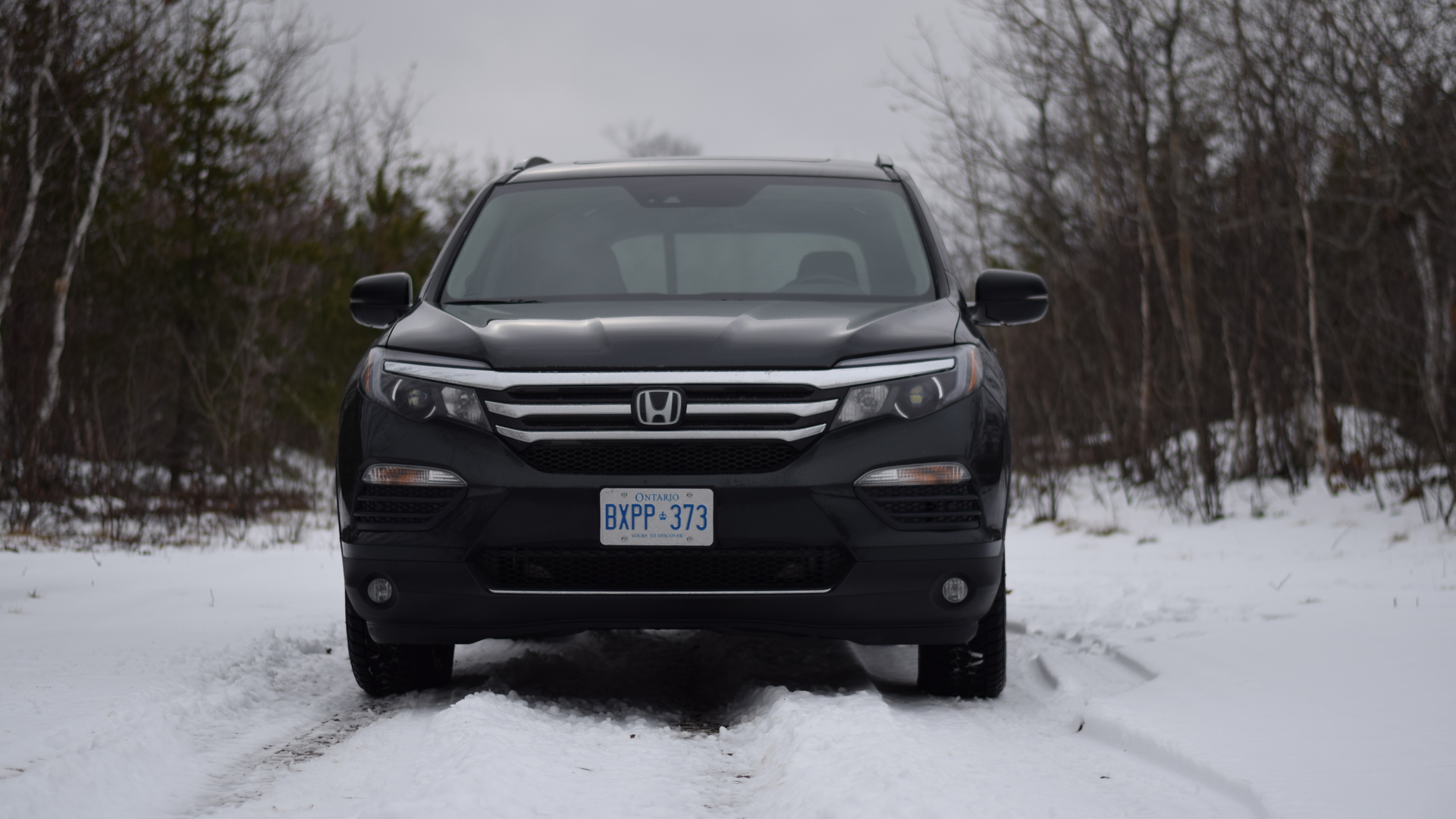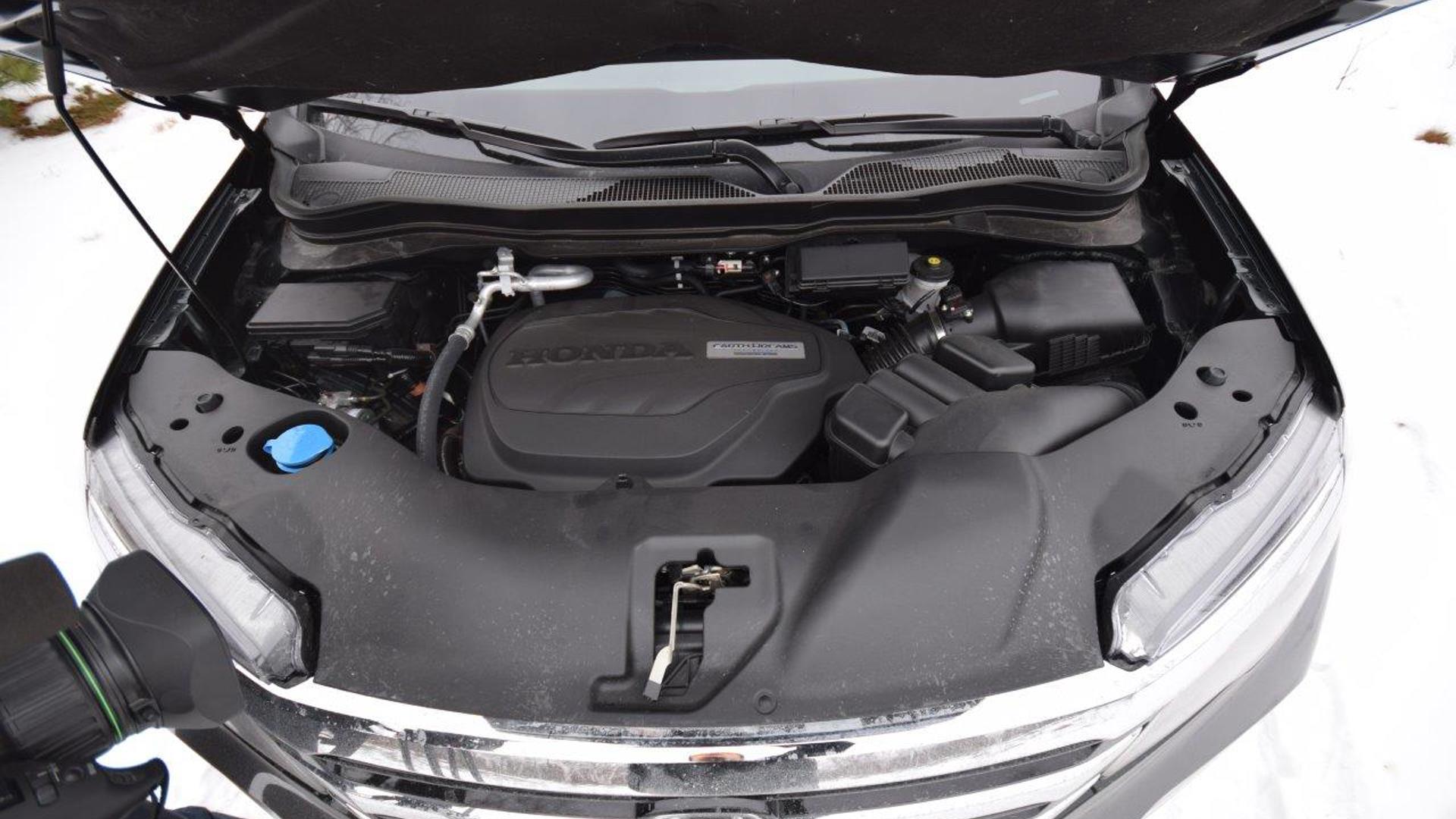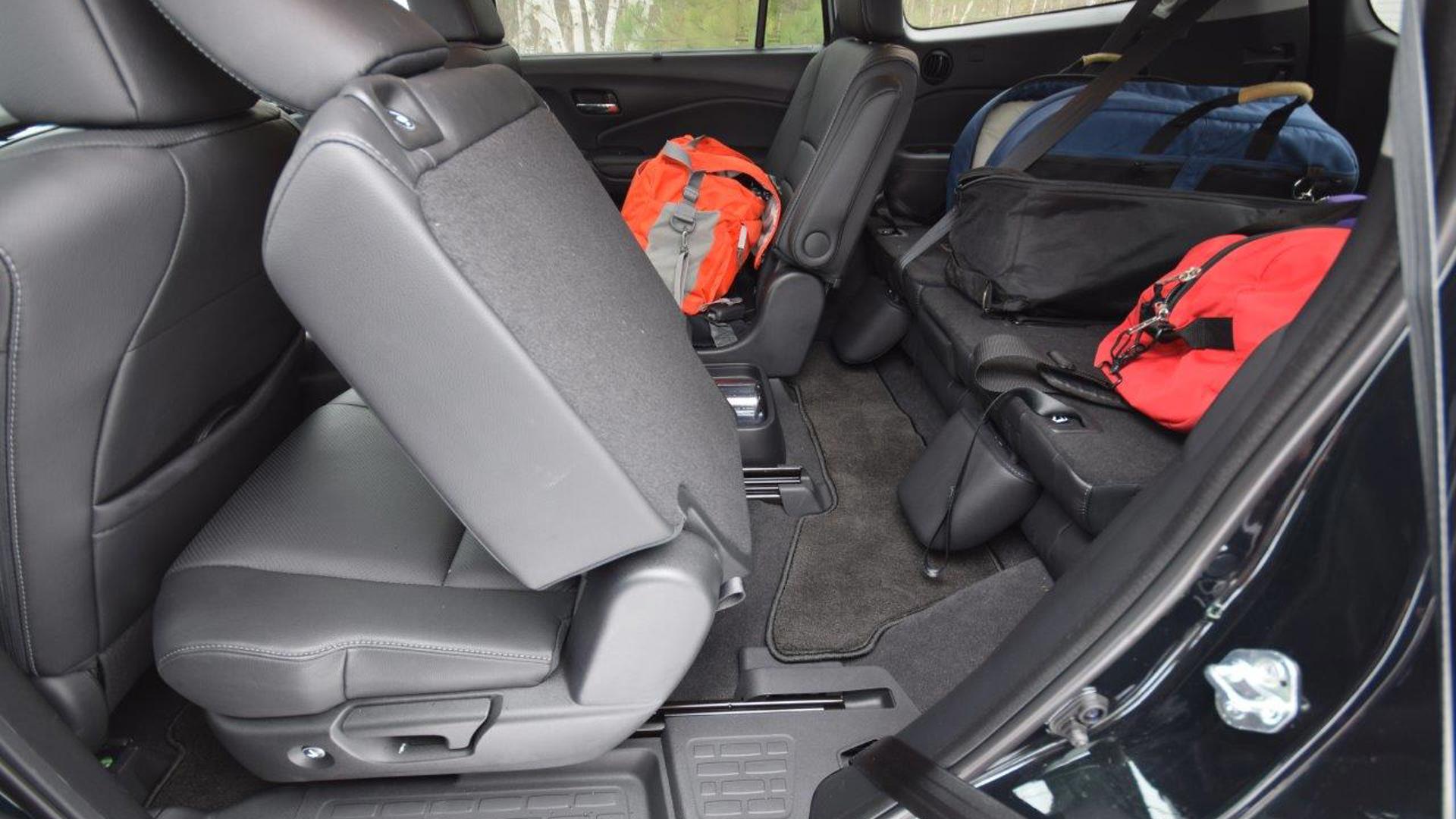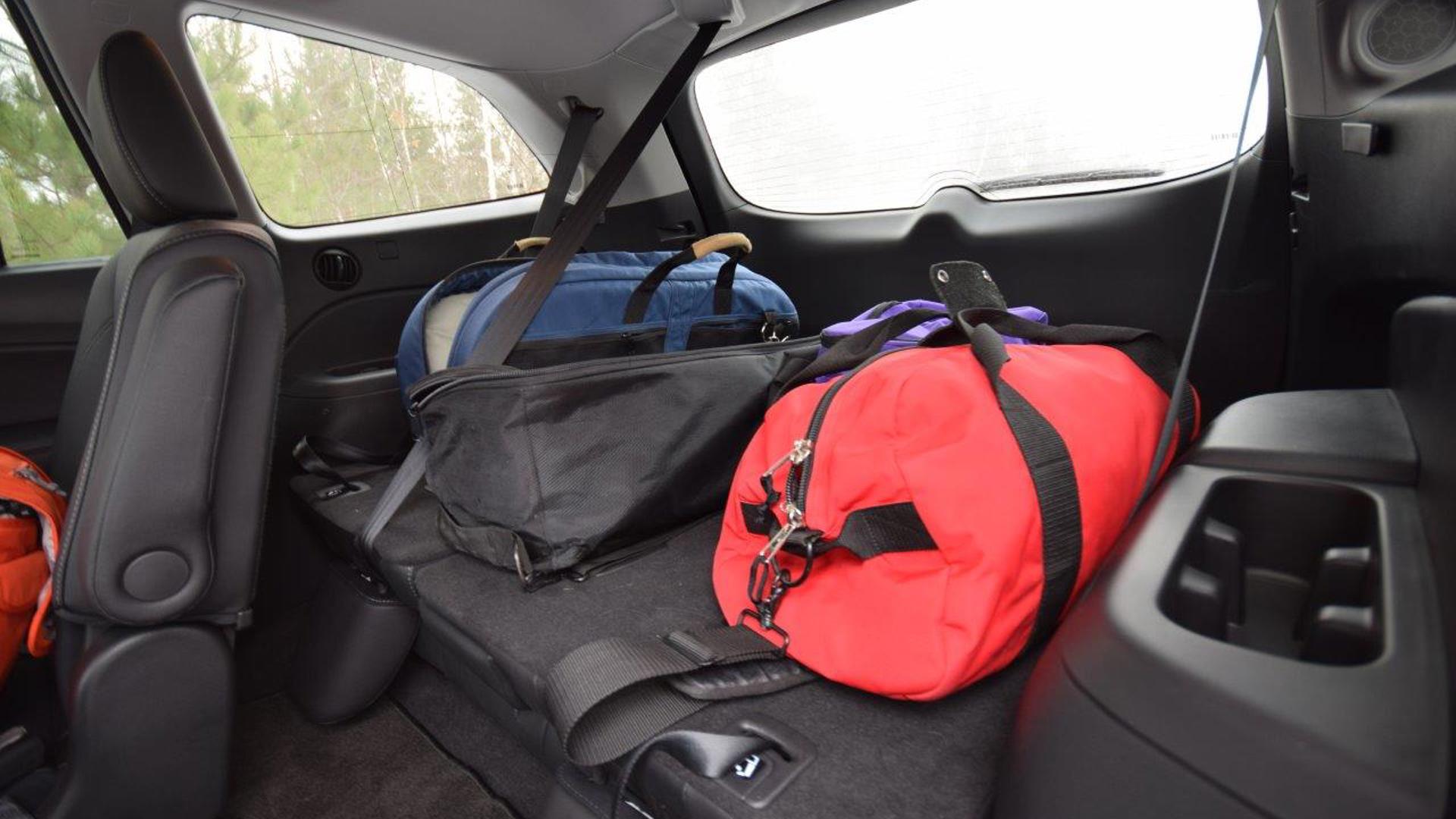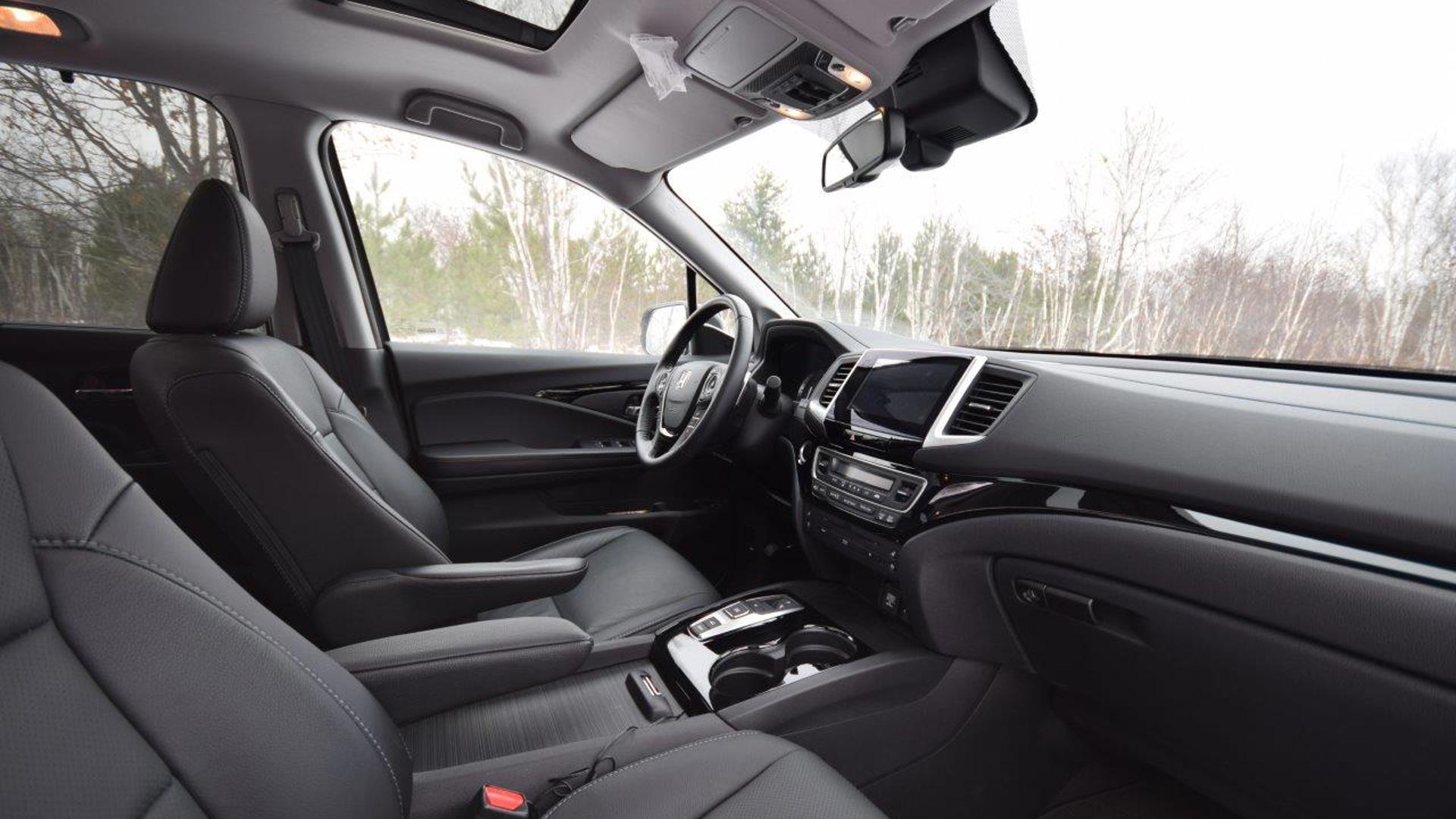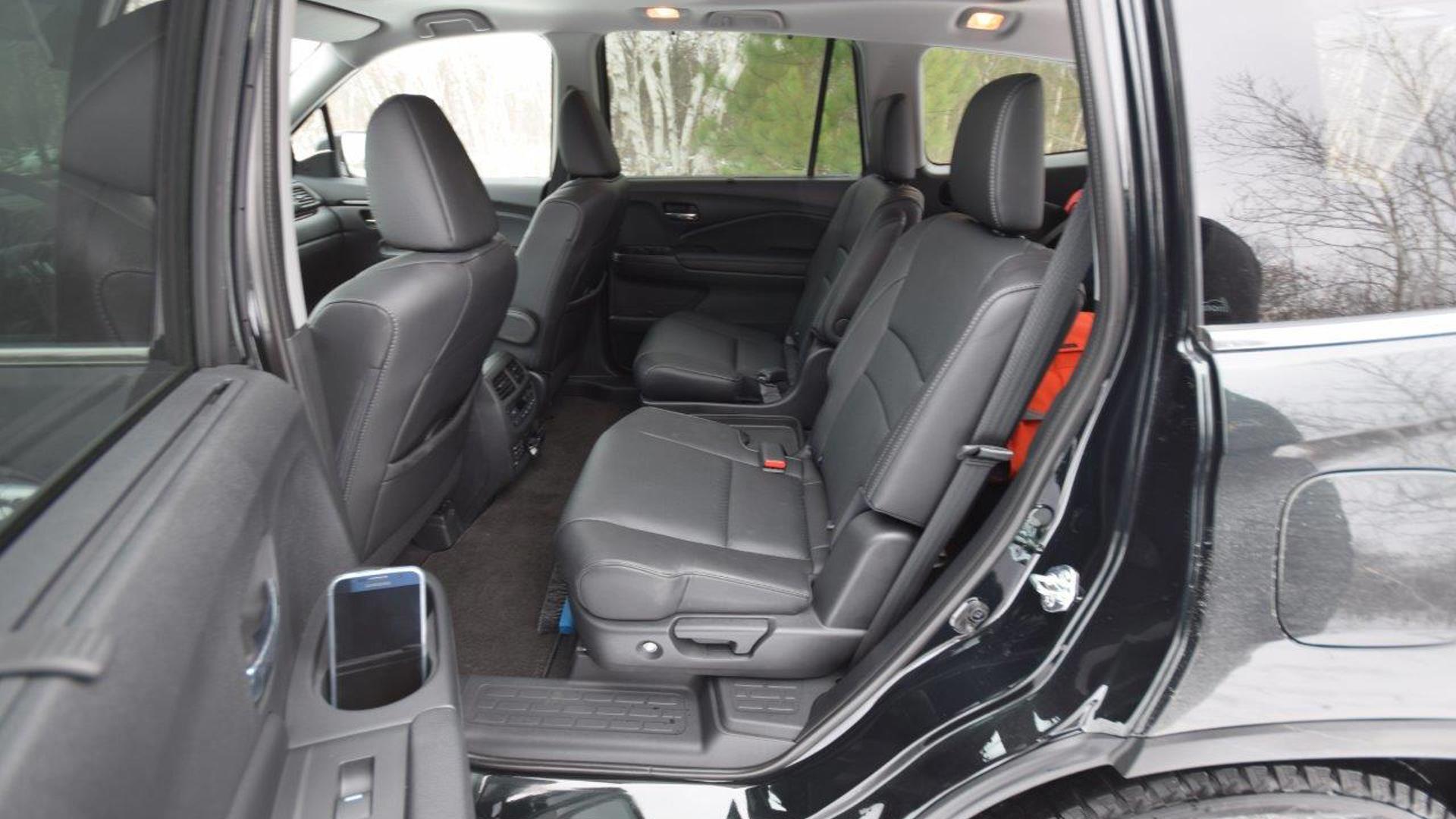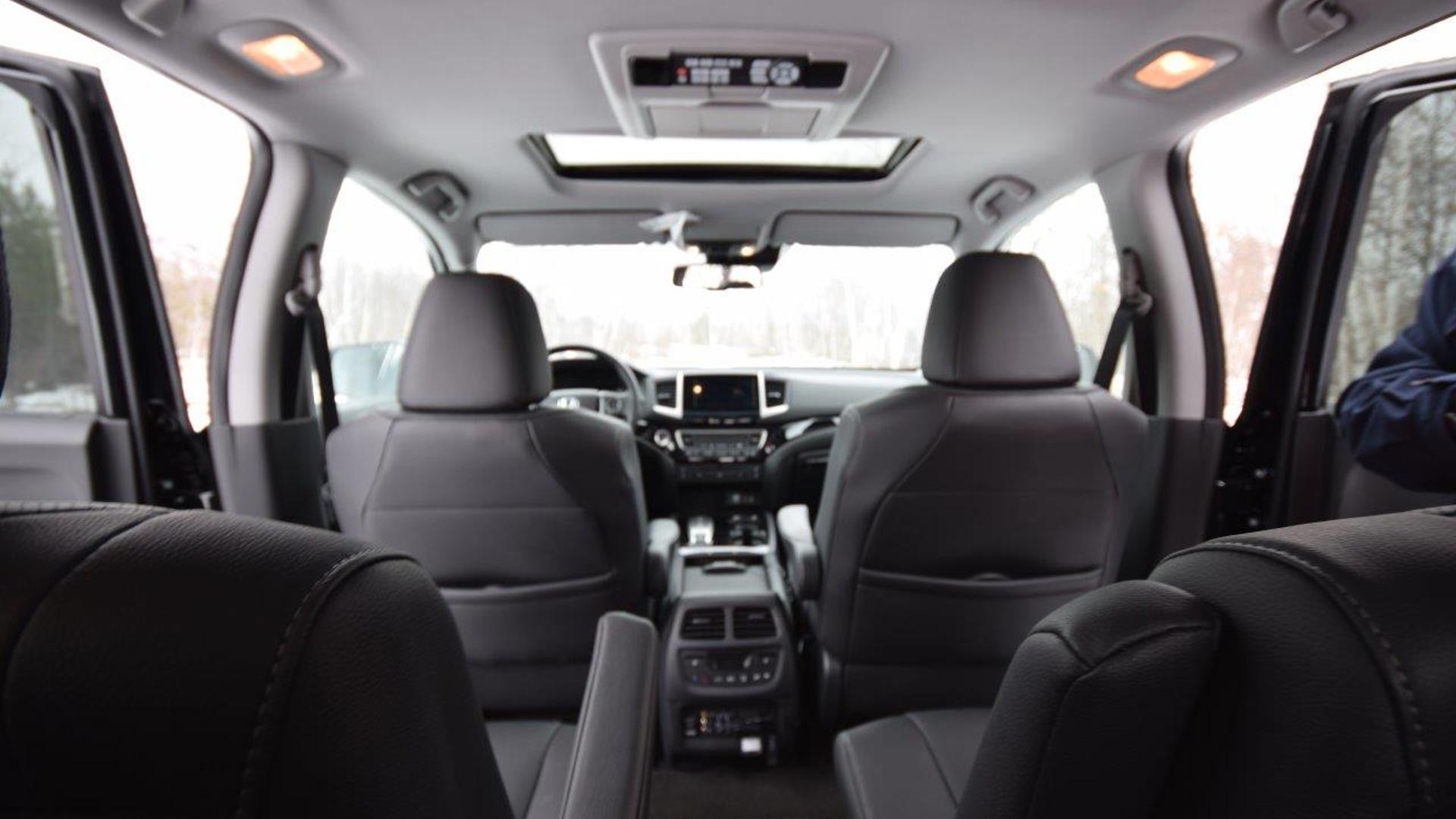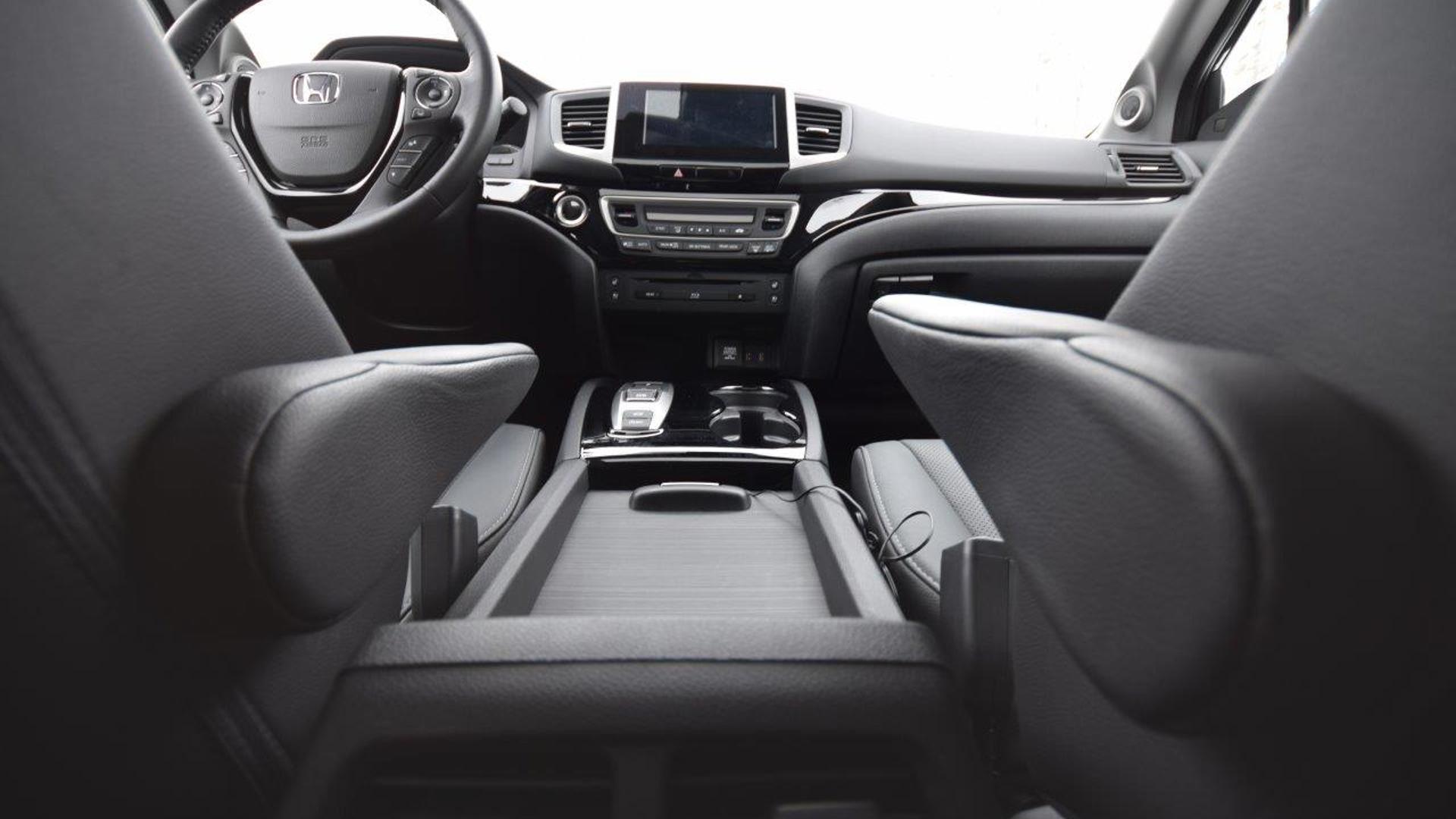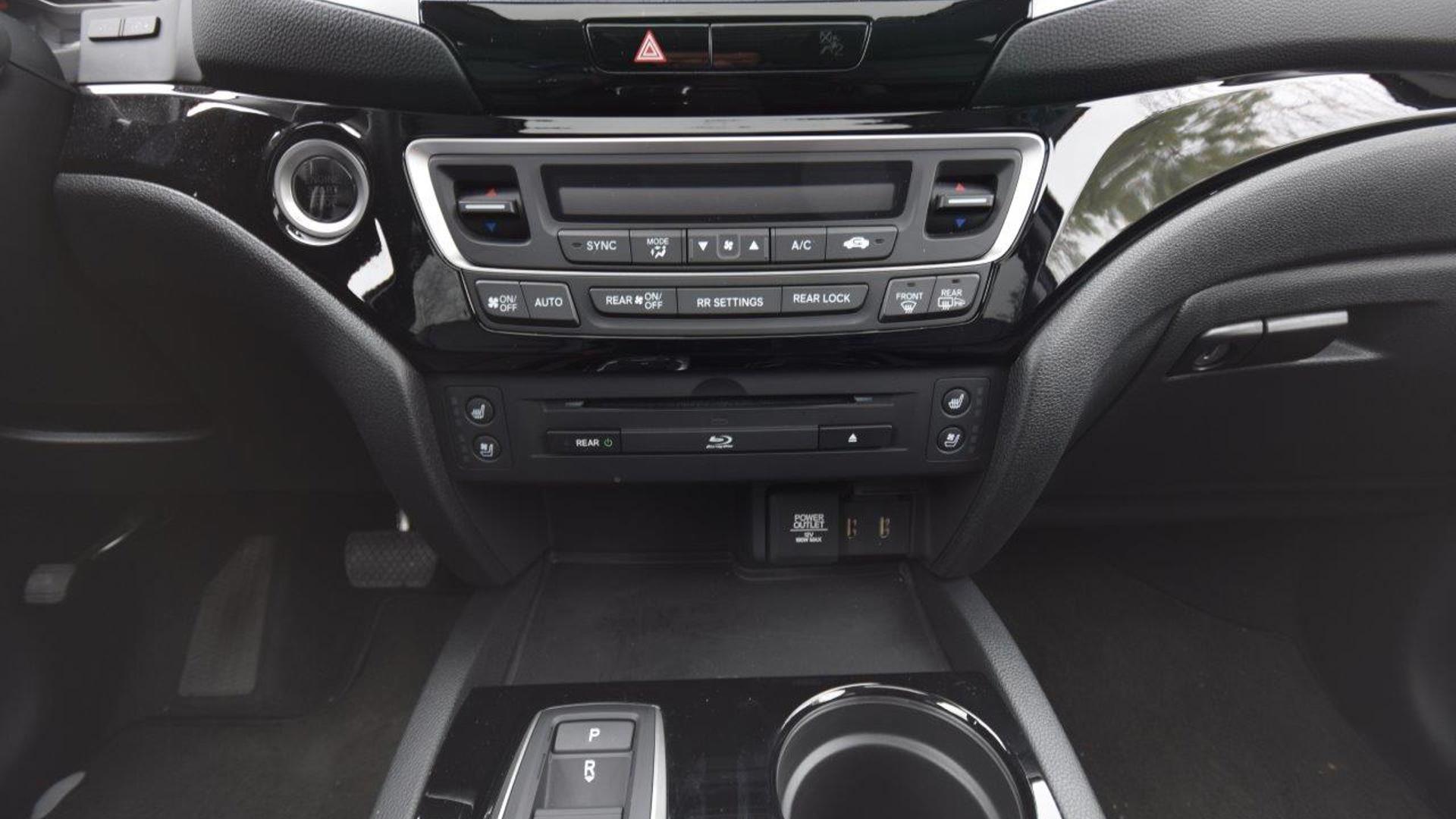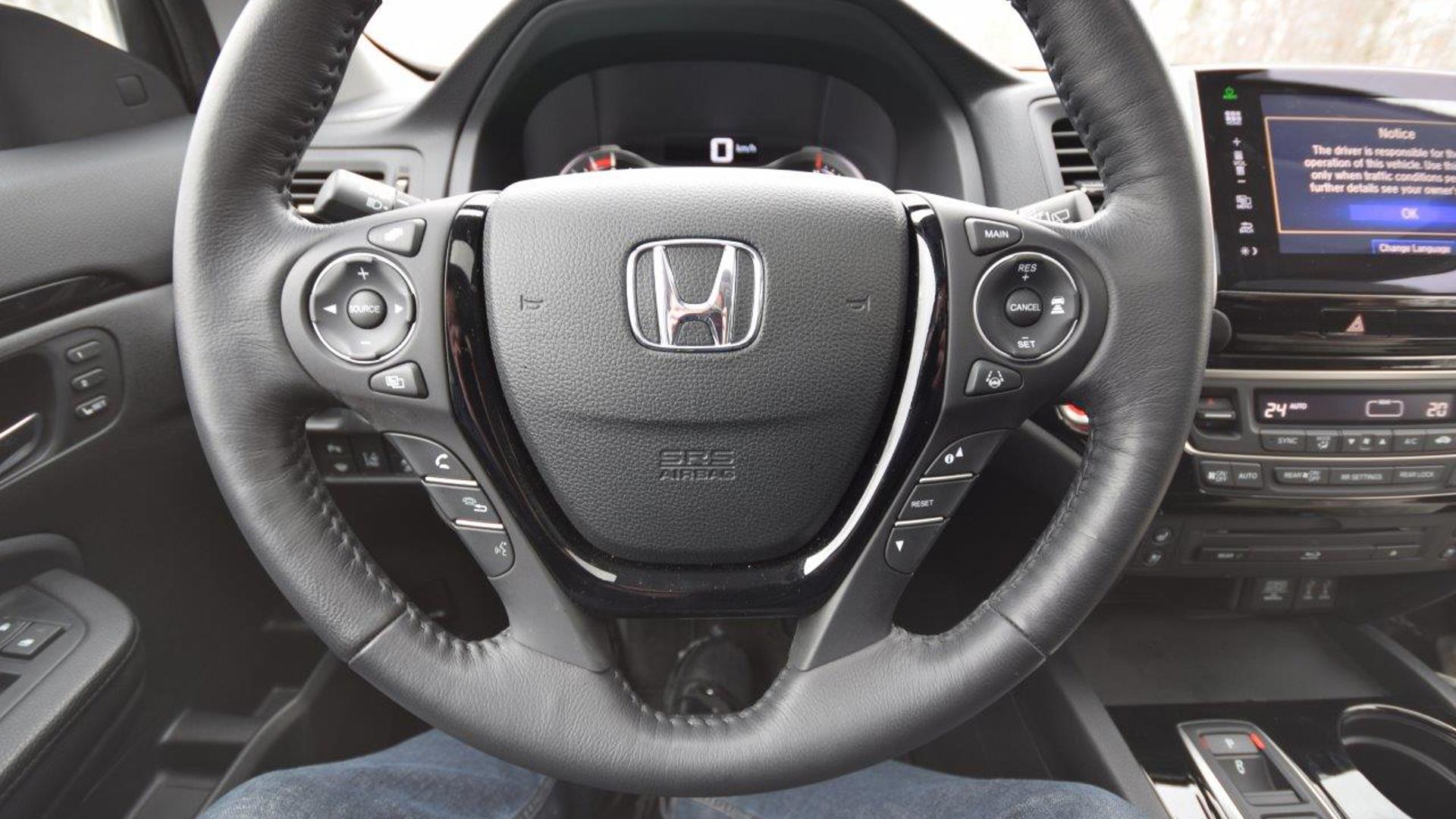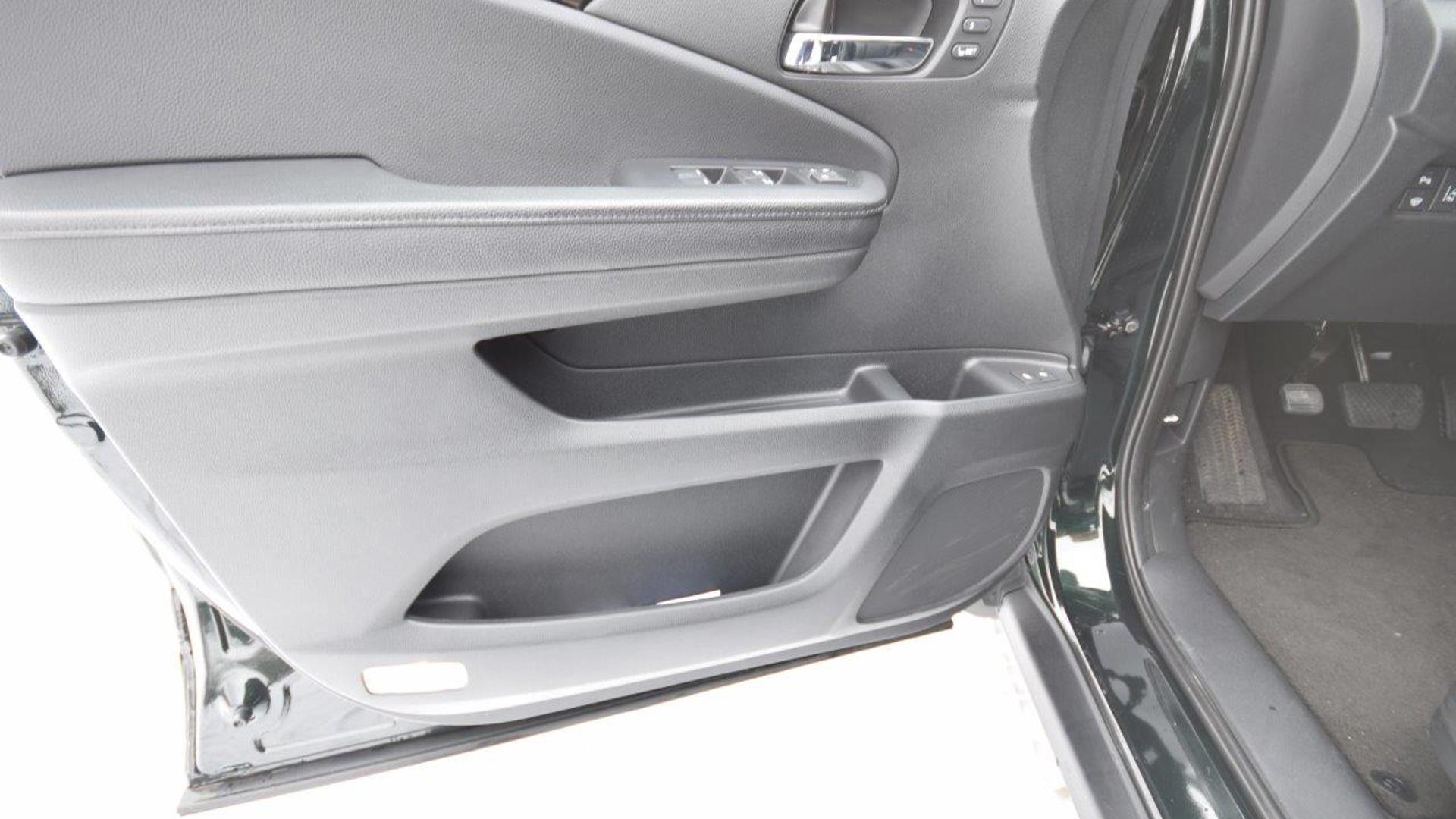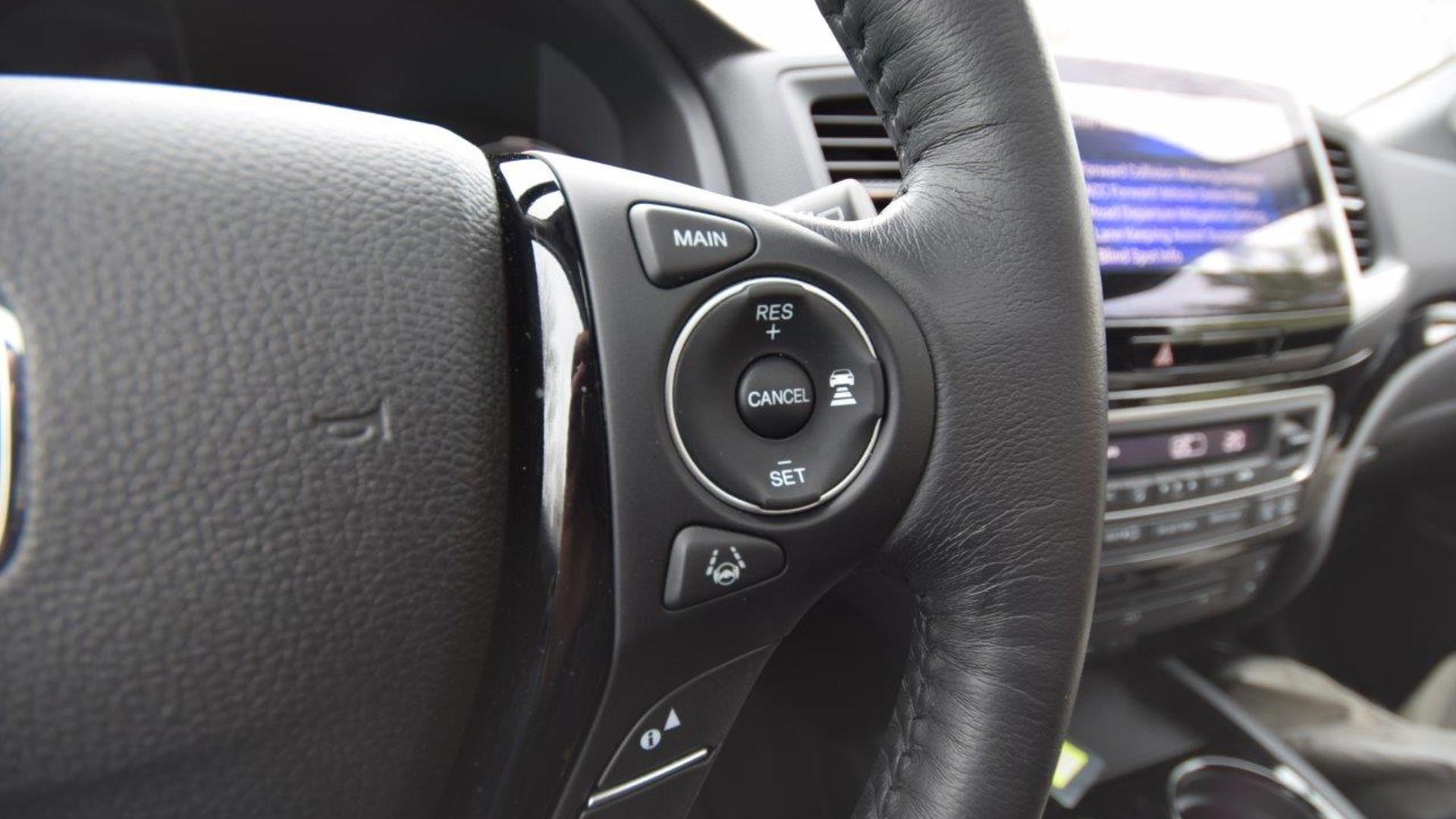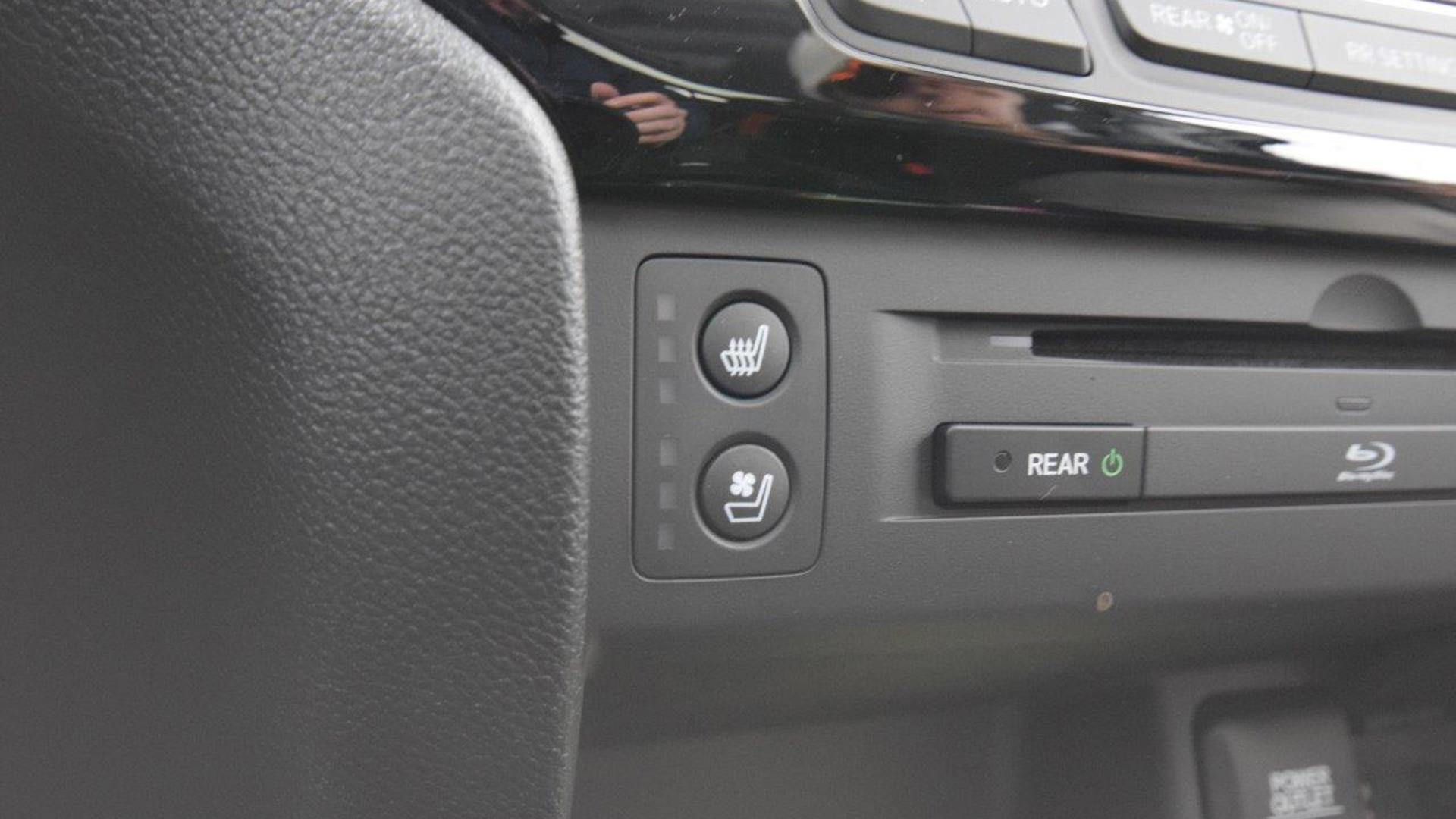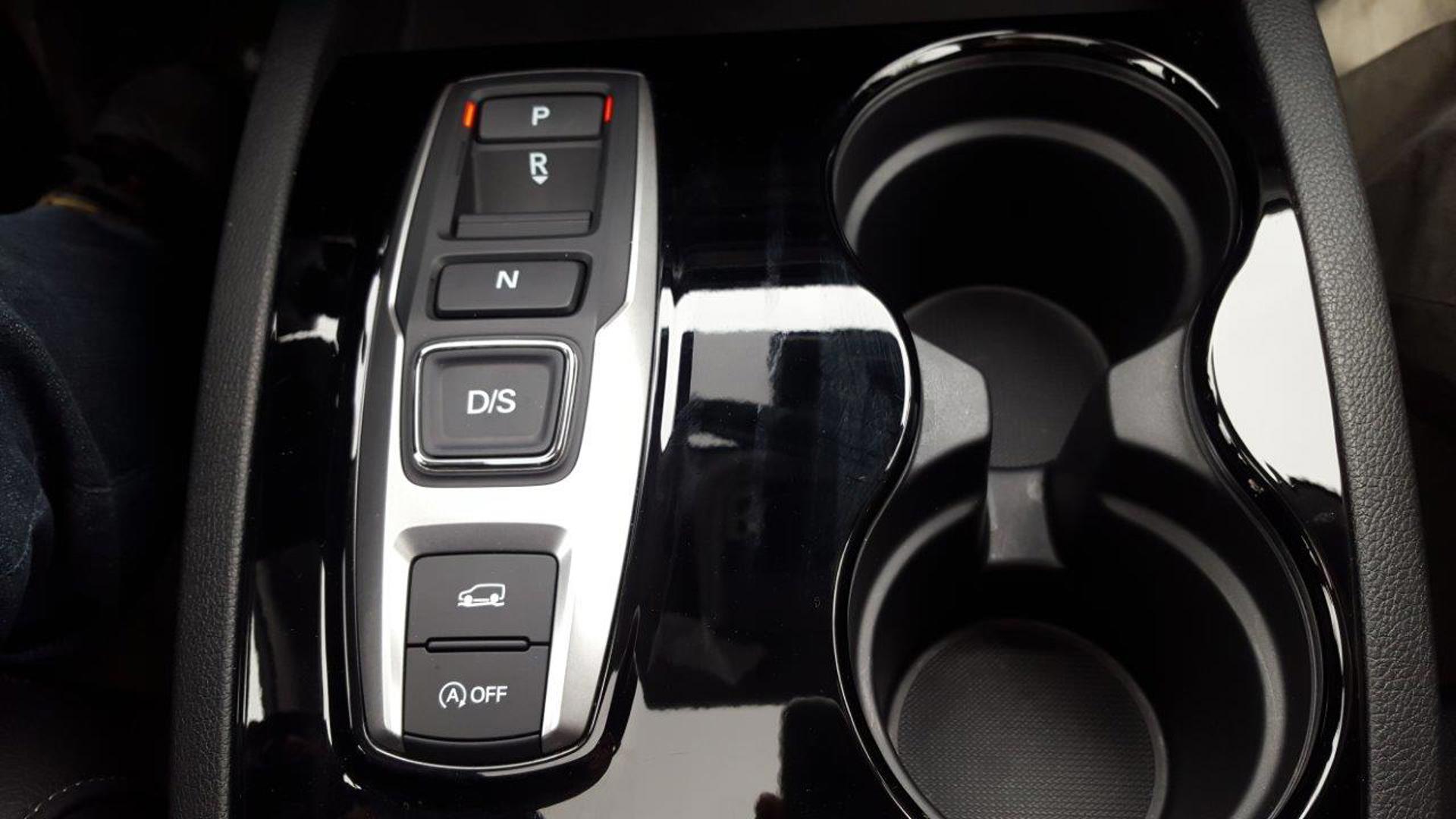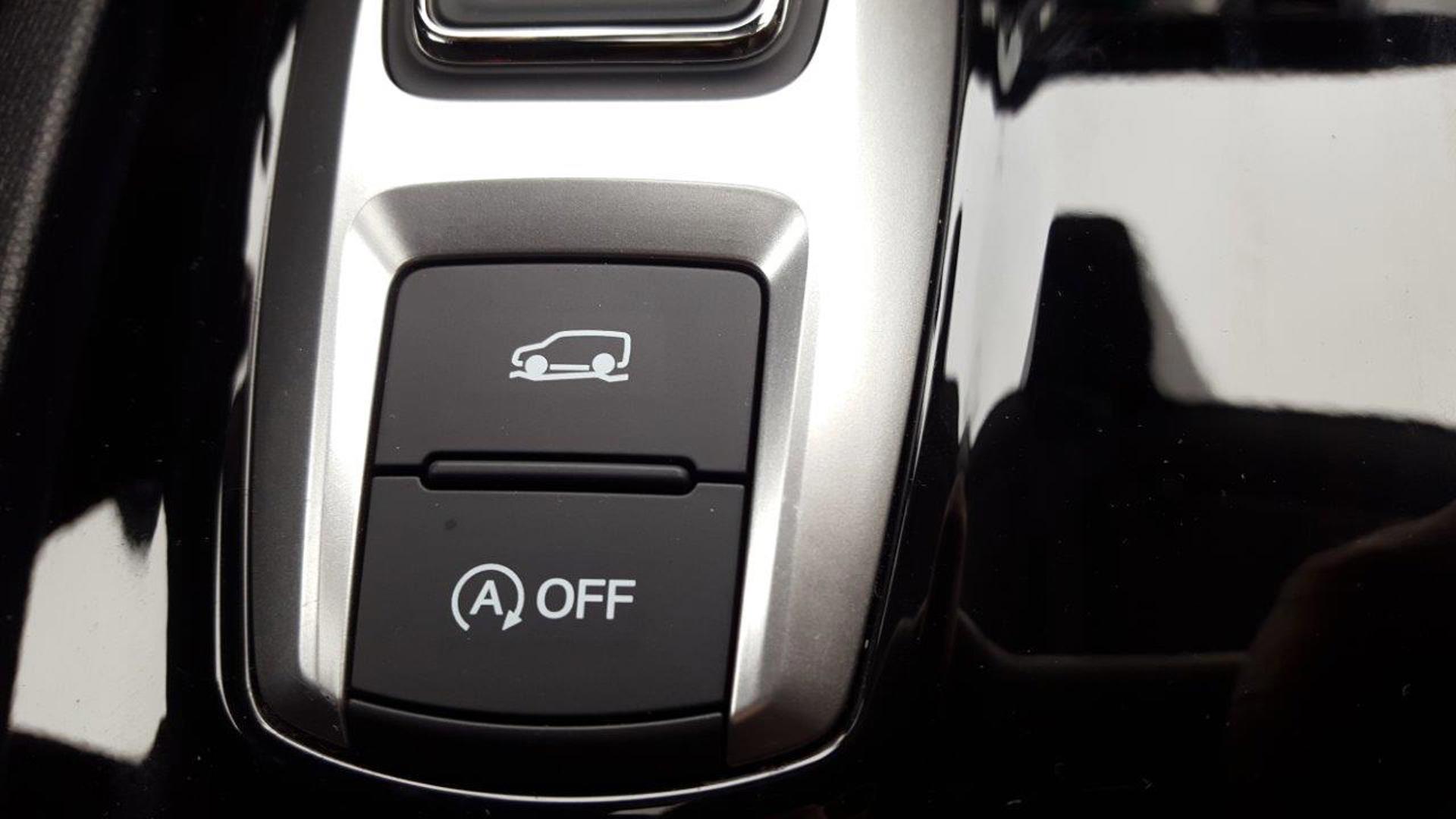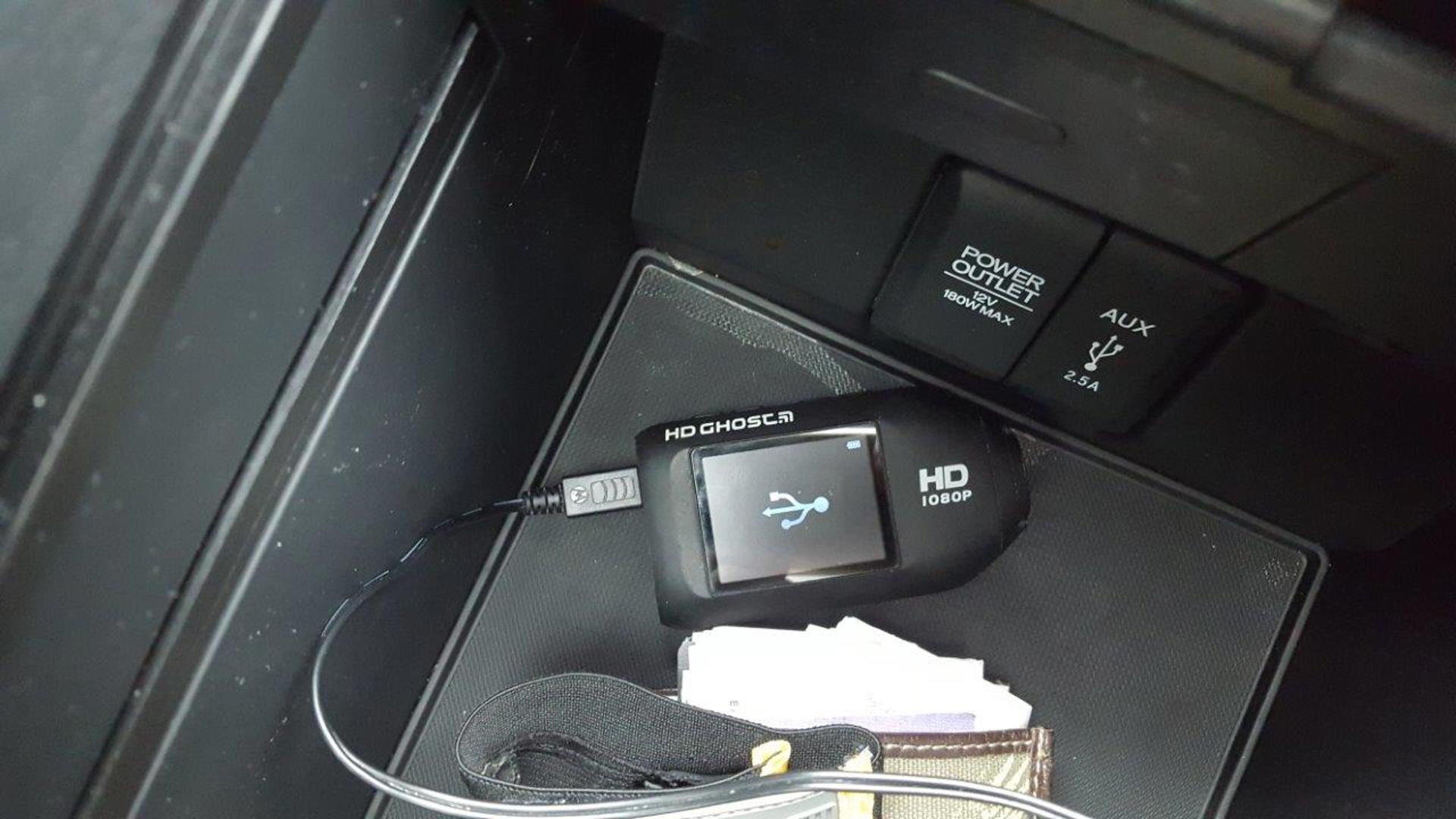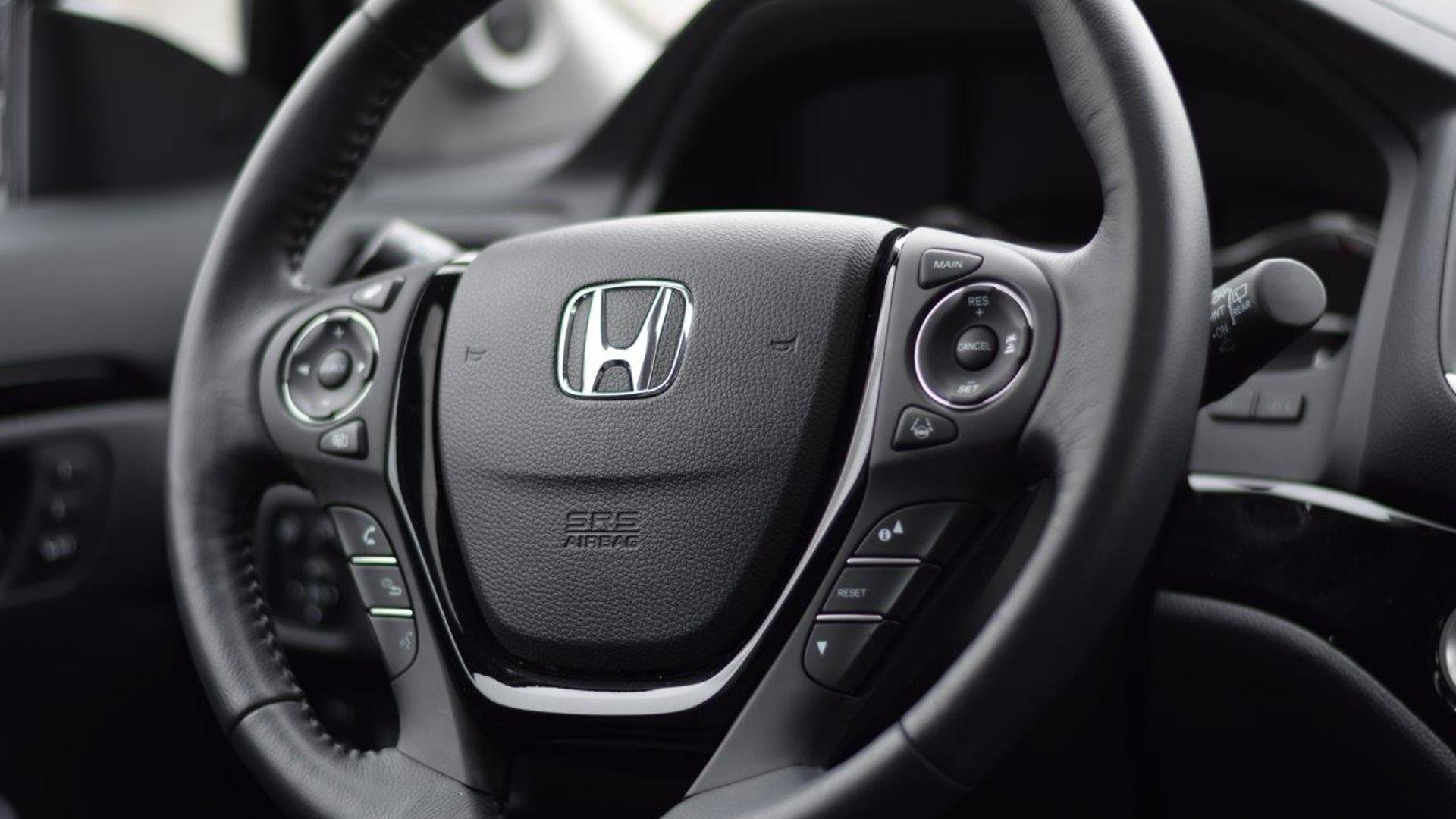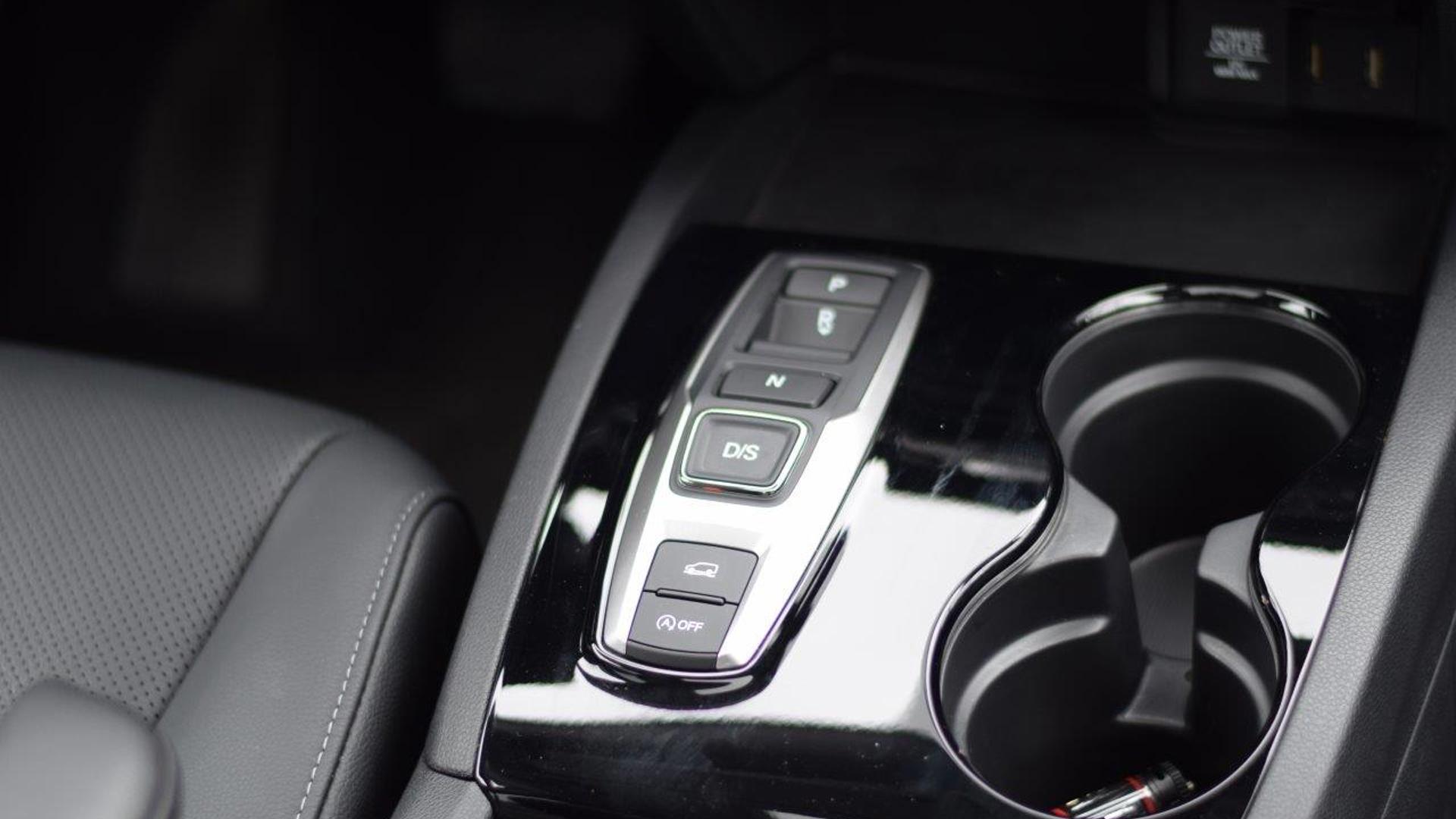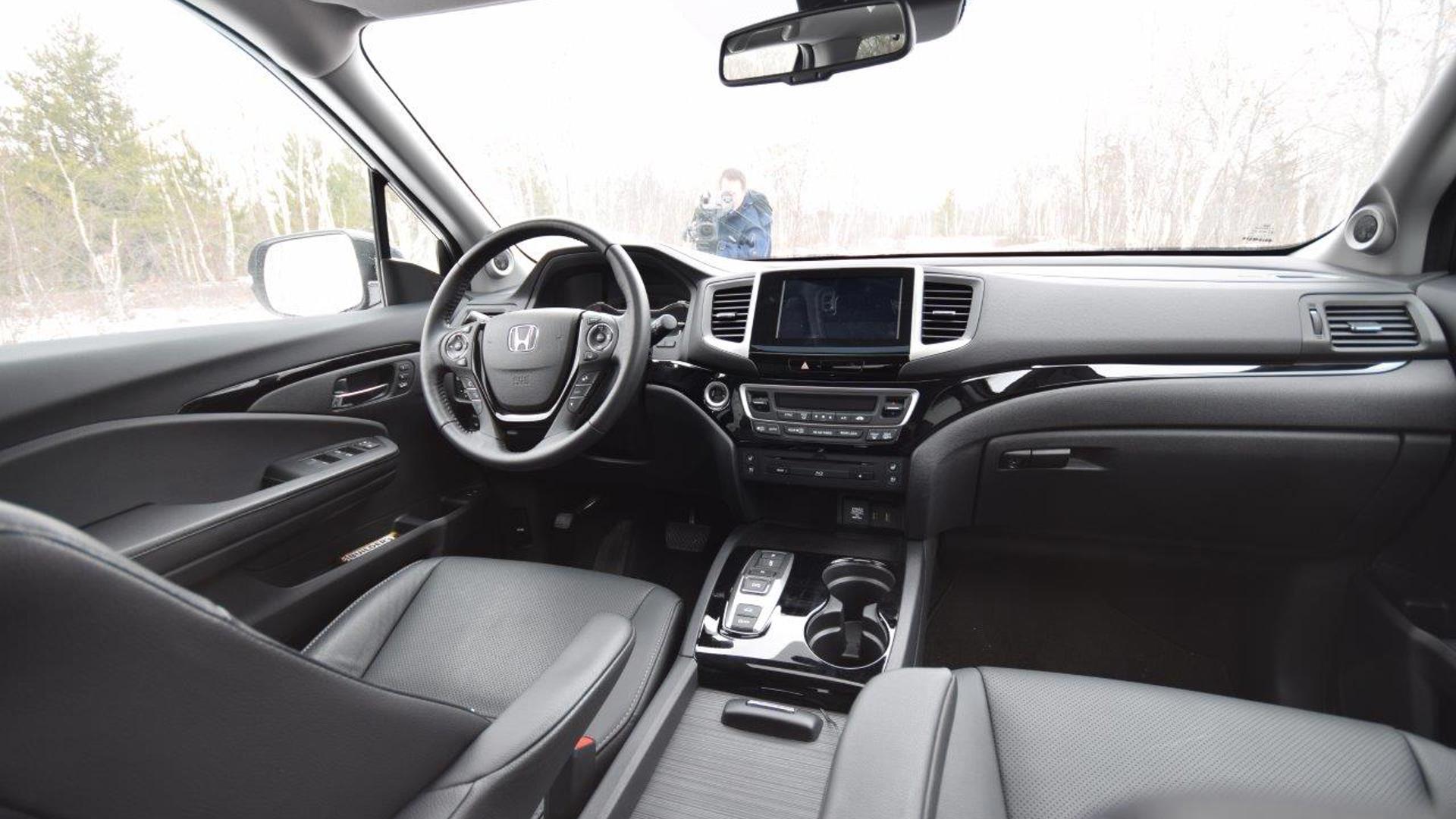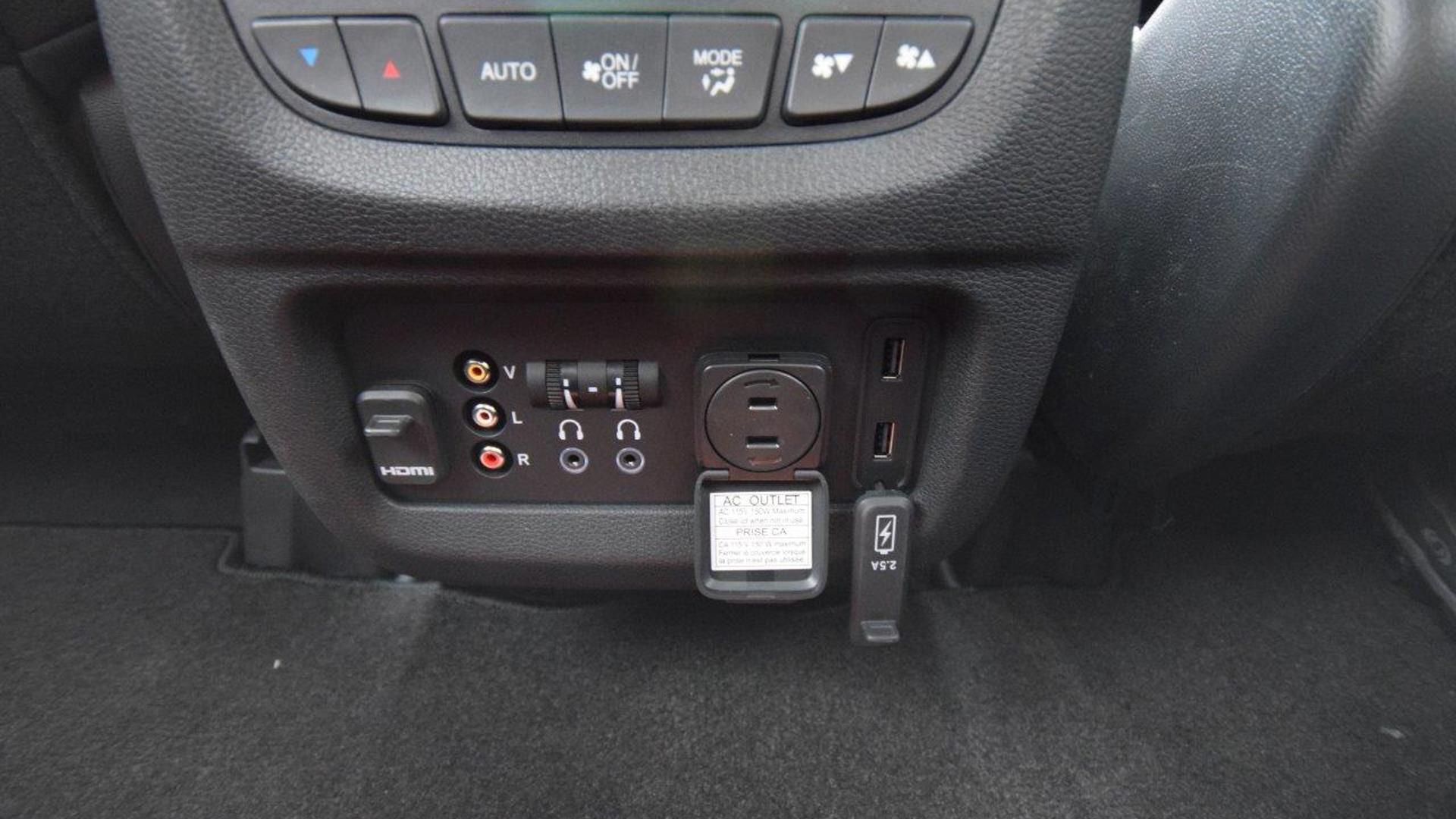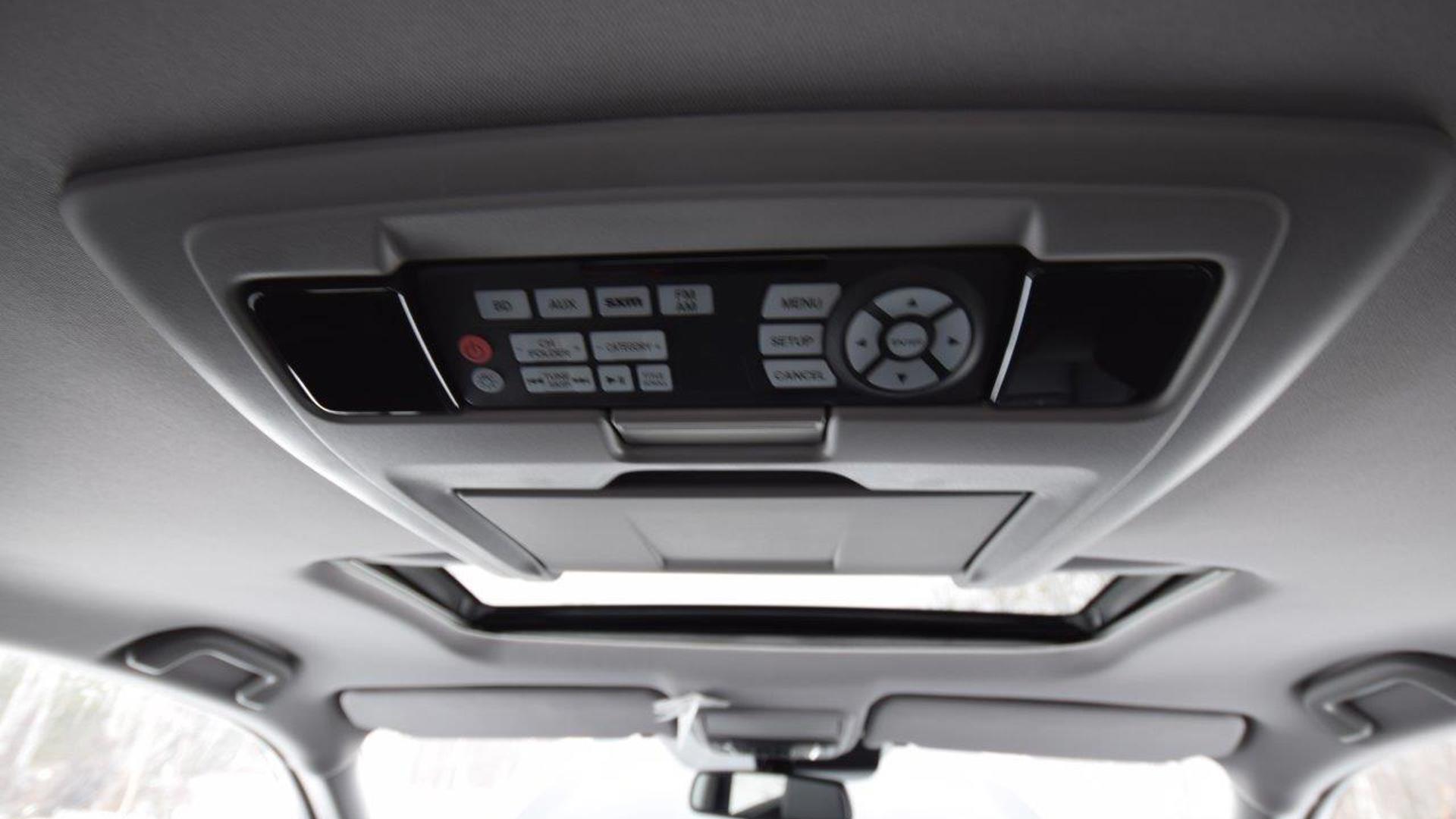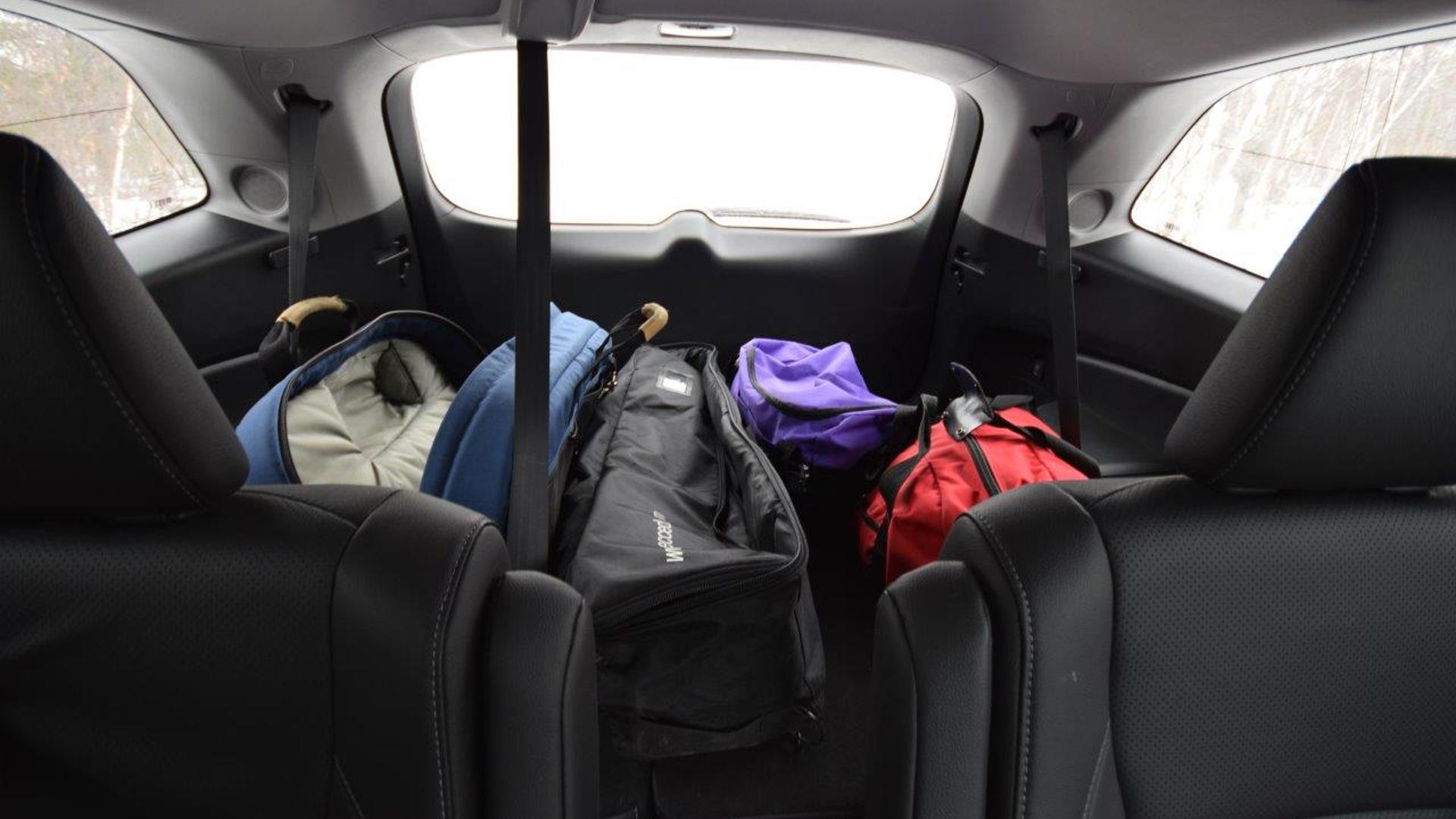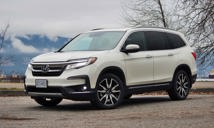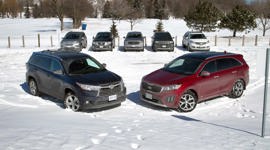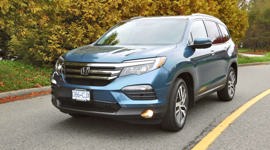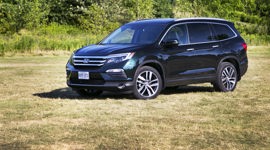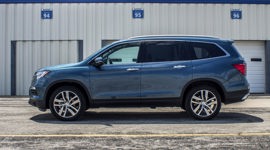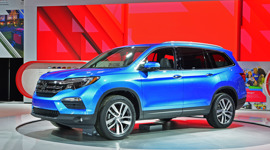The new-for-2016, third-generation Honda Pilot is a sign of the times, and itself, is also full of signs of the times.
Honda’s big, trucky-looking family hauler is now bigger, but less trucky-looking and more minivan-like instead. It’s longer. Overhangs are stretched. It's belly is an inch lower to the ground. A shift has been made from off-road capability to more car-like attributes, which leave the Pilot more aerodynamic, better handling, safer, roomier, and easier to enter and exit.
And that’s exactly what shoppers in this segment want. Nissan did a similar trick with the Pathfinder a few years back, and turning that nameplate from an off-road-ready ute into a friendlier soft-roader saw sales grow by hundreds of percent.
The Pilot is huge inside, and the way the cabin is arranged makes it feel even bigger.
So, Pilot’s shift to a more car-like product is a sign of the times. Others are on board.
Virtually everything that could be touch button, touch pad or electronic, within the Touring grade tester, is. From the glossy central command screen to the engine start button to the electronic gear selector, many common functions, including shifting gears, operate with a button press or tap. The central command system even accepts the same pinch, slide and swipe functions you’ll have been tapping into your Smartphone all day.
You have a Smartphone. Probably, so do all of your passengers. So, as another sign of the times, Pilot offers up a number of supercharged 2.5 amp USB ports, suitable for high-speed juicing of your electron-chugging mobile gizmos on the go. In fact, no fewer than eight power outlets, including a household plug, are within reach of the front seats.
You access these with a subtle step upwards, and then, once seated, two key attributes of the latest Pilot bop you one, right in the kisser.
First? The driving position. Even with the seat set low in the cabin, you sit up high. The dash is low in front of you. The console sits below knee height. Your writer, who is 5’11 on a good day, had inches of headroom to spare. It all generates a strong sense of sitting up high and in command and being surrounded by space. The Pilot is huge inside, and the way the cabin is arranged makes it feel even bigger.
Second? The manual outward visibility, that is, the kind that relies on the driver’s eyeballs, is excellent. Tall windows, a low beltline, thin pillars (thank the lighter, stronger high-tensile steel used for their construction), and even a properly wide, tall and square rear window make the Pilot easy to see out of. Sure, there are blind spots, and you’ll have to set up your mirrors properly, and a back-up camera is there to assist. But, as far as outward sightlines from a great big family ute go, this one has its stuff together. You can see the very forward edge of the hood, too, which helps make Pilot easy to park. Ditto the relatively tight turning circle.
All said, during cross-shopping test-driving exercises, Pilot will likely present among the best driving positions, best outward visibility, and best sense of roominess you’ll encounter.
Add in the abundant storage facilities, including no less than four storage cubbies on each door, dual cupholders at most rear seat positions, and a giant covered drawer between the front seats (with two power outlets inside!), and you’ve got a family crossover cabin that hits hard in terms of functional and handy details, both big and small.
In back, third-row seats fold down for a big, flat, wide and square cargo area, accessed by an available powered tailgate. The rear seats flip up with a tug on a strap in seconds, and are accessible for seating with a simple button press on the side of the second-row seats, which power-slides them out of the way. As an avid full-sized adult, I was able to access the rear seating area with minimal fuss, even if I’d still advise leaving them for the kids.
Styling isn’t up to par with the cabin’s functionality. Given the tester’s $50,000-plus price tag, shoppers might wish for some more colour, contrast or depth to the interior, which largely feels nice and flaunts plenty of leather and soft-touch paneling and stitching, though all in black, for an atmosphere that's on the dark and gloomy side.
Power comes from Honda’s latest 3.5L VTEC V6, now wearing the Earth Dreams badge and sporting direct injection for 280 hp. It’s a Honda VTEC engine through and through: decent low-end thrust, a ramping up of pull and snarl as the revs climb, and a happiness to be worked hard, once the lazy throttle and transmission programming are overcome. It’s a smooth performer with a delightful eagerness, though overall performance is adequate and little more. Those after more power for their family hauler dollar can check out a Durango Hemi or an Explorer with EcoBoost.
The tester offered a nine-speed (!) automatic, as well as fully-automatic AWD with driver-selectable traction modes for Snow, Sand, Mud and more. The revised AWD system operates with less slip-then-grip feel than before, with reduced front-wheel slippage and torque steer noted as more power is sent to the rear axle on slippery surfaces. The Snow Mode works nicely, locking in extra rear wheel drive at all times, and enhancing off-the-line traction by metering out power so it never outguns available traction levels.
It’s worth mentioning that driving on slippery roads with proper winter rubber and the AWD system calling the shots, Pilot feels the way it looks: big, stable, and confident. Notably, the steering is tuned to provide good feedback, and drivers can actually feel front wheels losing traction as it happens, because the steering isn’t artificially heavy, and nicely transmits what’s happening between the tires and the road when the going gets greasy.
Notably, running a set of fantastic Blizzak winter tires on some snow-covered trails, the tester never ran out of grip taking off, or especially, when stopping.
Other notes? The highway drive is about average in terms of road and wind noise levels, the suspension and long wheelbase turn in a smooth highway ride, though rough roads in town can cause noise and comfort levels to degrade, thanks to the big wheels. Pilot’s steering, even at highway speeds, feels nicely calibrated against the vehicle’s size and suspension tuning too: not too sporty, not too lazy, but just about right on at all times.
Mileage on my watch, including plenty of highway cruising and generous use of the fully automatic AWD system landed at 13.5 L/100 km – that’s about what we’d expect from a great big four-wheel drive with heaps of space. In real life, under similar driving conditions with your writer at the wheel, a 2013 Nissan Pathfinder did about 13 L/100 km, and a Dodge Durango Hemi did 16.
Complaints, keeping context in mind, were minimal. The electronic shifter is simple to use (you just press a button), but your brain may take a while to get used to it, some shoppers will wish for some more style and depth from the interior, and the ride, on rough roads, can become choppier and noisier than various competitors. Thank the 20-inch wheels and big tires.
End of the day, if space, storage, great visibility and a great driving position are bigger priorities in your next big family ute than performance firepower and cabin styling, this one’s a priority test-drive.
| Warranty: 3 years/60,000 km; 5 years/100,000 km powertrain; 5 years/unlimited distance corrosion perforation; 3 years/unlimited distance roadside assistance Competitors: |
| Model Tested | 2016 Honda Pilot Touring |
|---|---|
| Base Price | $50,490 |
| A/C Tax | $100 |
| Destination Fee | $1,695 |
| Price as Tested | $52,285 |
|
Optional Equipment
None
|
|
